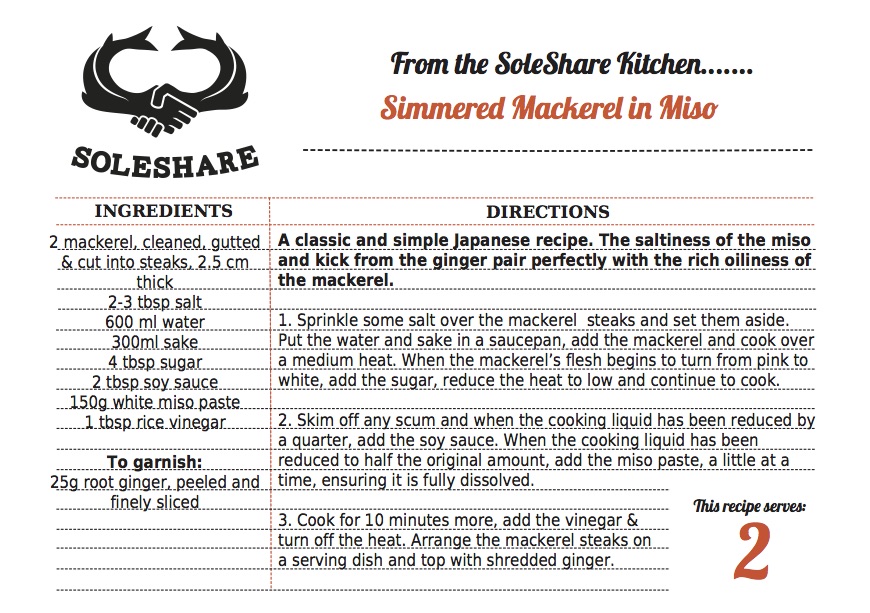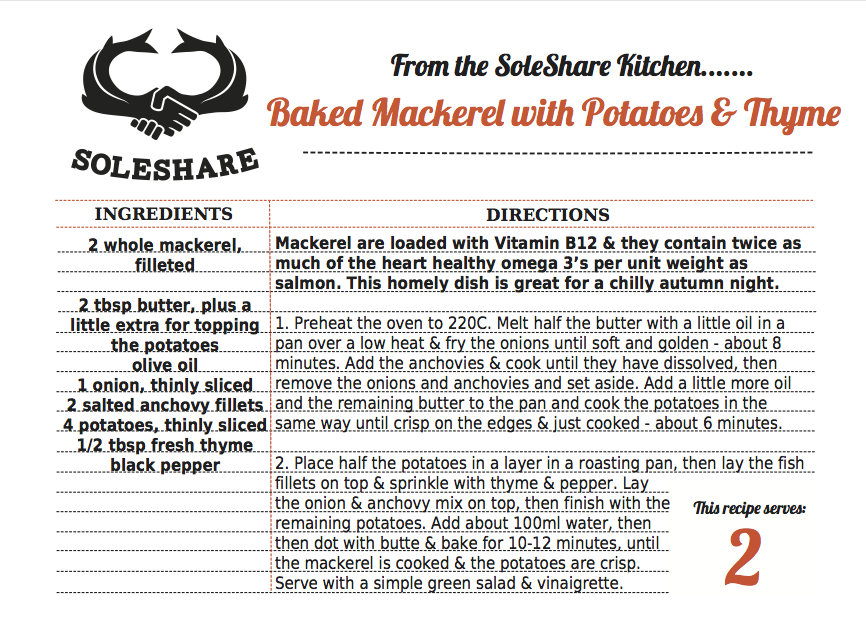
MACKEREL
Home | Fish & Recipes | Mackerel
Scomber Scombrus
Biology
Mackerel are a classic pelagic, or open ocean fish. They have streamlined, torpedo-like bodies. They're Scombrids, same as tuna. Scombrus comes from the Greek for 'to hurry' which is apt, as they're constantly on the move, chasing their prey of plankton and bait fish and being chased by predators- anything from dolphins to hake. They form vast shoals, a defensive tactic against predation. Their tiger stripes are not camouflage, but visual cues to help individual mackerel keep formation in these huge schools.
They have both dark and light meat. This colour comes from two distinct muscles in the body. Their cruising speed (of around a metre per second) is sustained by the paler muscle, whereas their short bursts of energy (reaching up to 5.5 metres per second), is fuelled by the darker, richer muscle.
Fishing
Mackerel have seen a real surge in popularity in recent years. They breed like rabbits and are a great choice, both in terms of sustainability, nutrition and flavour.
Really quick and easy way to fillet a mackerel
They've been featured in the news a lot recently, with a number of people assuming that they're not quite the sustainable choice they once were. As ever, this is a complex issue, one where politics plays an equal role with the health of the fish stock itself. They’re beginning to spread northwards, due to warming seas, which is causing some political wrangling between the EU, Norway and Iceland as to who’s allowed to catch them.
Iceland have never really caught much mackerel before (they never used to venture so far north), but now the shoals are showing up in vast numbers and Iceland (which, to be honest hasn't got a vast amount of terrestrial natural resources), has started to catch them. Norway and the EU are moaning, because they never factored Iceland into the sums when divvying out who could catch mackerel. Iceland say the EU should reduce how much they catch (Iceland, like Norway, have a pretty good record of looking after their fish stocks, unlike the EU). The EU, says if Iceland want to join the EU, they'd better play nice.
Standard geopolitics. The good news is, mackerel stocks can probably recover from the dent of overfishing for a year while the mess is sorted out. Any longer though and we'll start to worry. This shift in fish stocks' geographic range is something we're going to see a lot more of (thanks to climate change), so let's hope our politicians get used to this kind of thing...
All our mackerel are handlined or caught in drift nets. The mackerel you find in the supermarket (and a lot of fishmongers) will have been trawled (somewhere near Iceland). Most will be from the pelagic pair-trawlers that operate in the area. This is where two boats tow a huge (swallow a jumbo jet huge) net between the two of them. It's a very efficient way of catching fish. Too efficient we think.
Eating
Mackerel are the marmite of fish. We, obviously love them and suspect people that don't have never eaten one fresh from the sea. They develop a fishy, oily smell after a while and go grey and mushy (just look at supermarket mackerel). So before you dismiss them, try one of ours.
Mackerel’s oily flesh, goes well with some sharpness, be it mustard, chilli, garlic or lemon. The gooseberry, a classic pairing, is actually called the groseille à maquereau in French.
If you're ok filleting (go on, give it a go), we'd thoroughly recommend making shime saba a Japanese cured mackerel dish that will blow your mind, It was so good, Jack wrote a blog on how to make it.
Like most oily fish, they’re best cooked quickly on a high heat- think BBQ or grill, to crisp up the skin and give a bit of charred Maillard umami.
CLICK HERE FOR SMOKED MACKEREL RECIPE






















